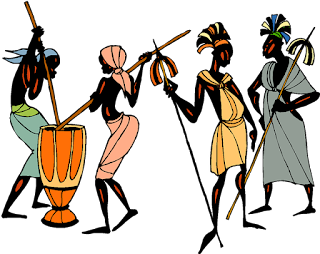INDIAN TRIBAL CULTURE
INDIAN TRIBAL CULTURE - The Major Tribes of India
Indigenously known as the Adivasis, the tribal population of India constitute about 8.6% of the Indian population, comprising of 104 million people. The various tribes of India are characterised by their distinct customs, beliefs, traditions that are particular to their community and their perfectly harmonious living with nature. These tribal societies are prominent in the states of Andhra Pradesh, Chhattisgarh, Gujarat, Jharkhand, Madhya Pradesh, Maharashtra, Odisha, West Bengal, Andaman and Nicobar Islands and some north eastern states. Some of the major tribal groups in India include Gonds, Santhals, Khasis, Angamis, Bhils, Bhutias and Great Andamanese and many more.
The Gonds are a nomadic tribe that are one of the most famous
tribes in India, primarily located in Madhya Pradesh, Chhattisgarh, eastern
Maharashtra, northern Andhra Pradesh and western Orissa. Gonds also form the
largest tribal group in central India.
Bhils are a tribal group that are widely distributed across India.
They form the largest tribe of the whole of South Asia. Bhils occupy the
mountain regions of Madhya Pradesh, Maharashtra, Gujarat and Rajasthan. They
are also found in the north eastern parts of Tripura.
The Santhals are an ethnic group that are native to Nepal and
inhabit other states of India such as Jharkhand, Assam, West Bengal, Bihar and
Odisha. Khasi tribes reside in various parts of India including the state of
Assam, the Khasi and Jaintia hills of Meghalaya, Punjab, Manipur, West Bengal
and Jammu and Kashmir.
The Angamis are concentrated over the state of Nagaland and north
eastern parts of India, whereas the Bhutia community are native to Sikkim, West
Bengal, Nepal and Bhutan and share Tibetan ancestry. The Great Andamanese tribe, as the name
suggests are indigenous people of the Great Andaman archipelago of the Andaman Islands.
Apart from these major tribes, a number of other communities are
found scattered throughout the country with each having their own territories,
language, festivals, customs and beliefs. Tribal communities are firm to follow
their traditions and practices, despite the external influences of other people
from other parts of India. The tribes of India are an important part of Indian society and culture and display a strong need to be respected and protected by the rest of the world.
By Faaiqa Aisha







Hamsika
ReplyDeleteTribal culture always interests me. They have a unique ethnicity and powerful rules to be followed and maintained.
I have not known more than the bhils and the gonds. They follow a very different set of rules or norms.The blog is crisp and to the point.
ReplyDeleteThis blog gives information about the various tribes of India. This is so interesting.
ReplyDeleteVarshaa.R
It is amusing to know that so many tribes exist, let alone their distinct cultural aspects.
ReplyDeleteFaadila Aisha
Got to learn more about the tribal groups and their culture- Archita. T. Menon
ReplyDelete